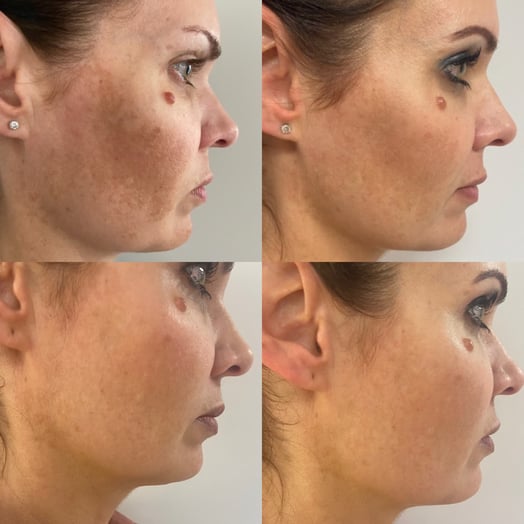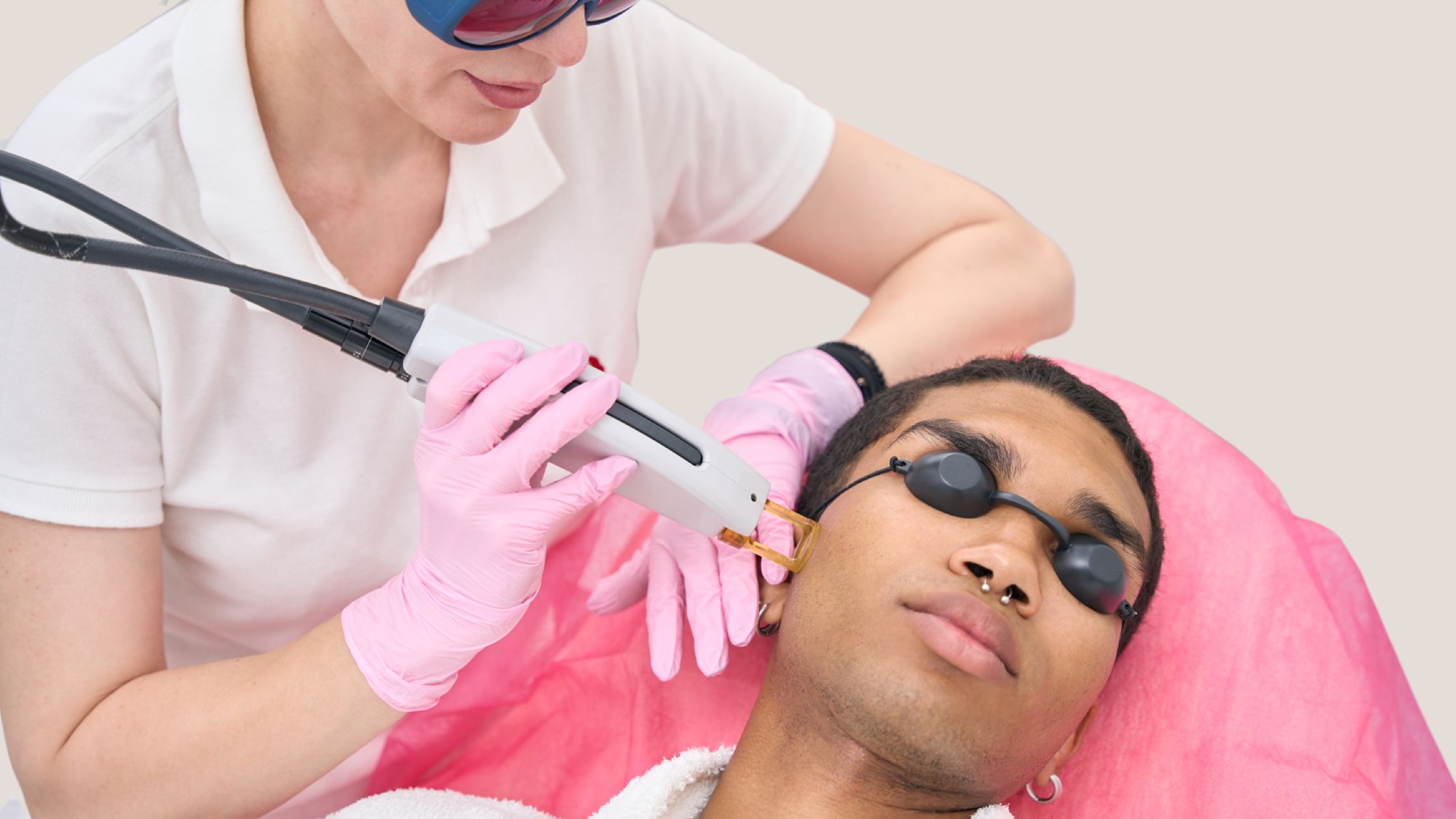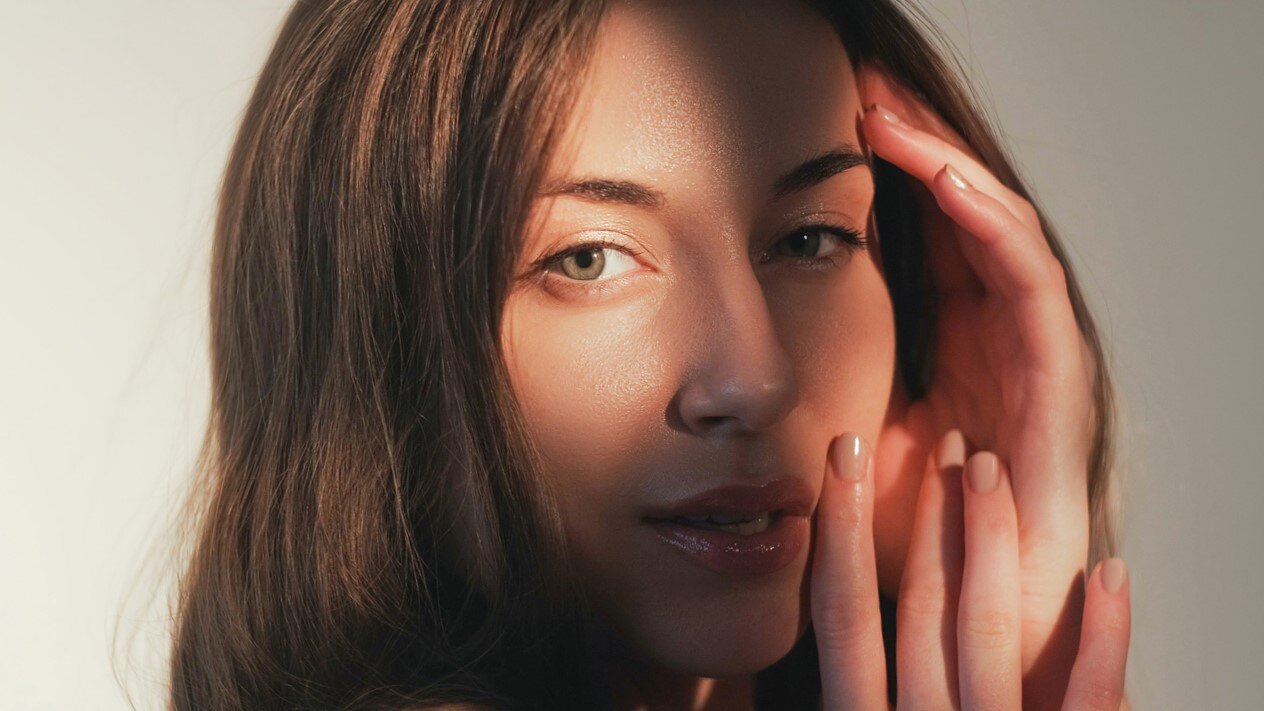BBL Photofacial vs Laser at Martin’s: Uses and Differences
IN THIS POST:
- 01 BBL vs Laser: Definitions
- 02 BBL vs Laser: Uses
- 03 BBL vs Laser: Benefits
- 04 BBL vs Laser: Differences
- 05 How to Get Started with BBL and Laser
TL;DR: This post differentiates between BBL and laser, so you know what to expect before and after either treatment (or as a combination).
**Take note that this blog is purely for educational purposes. During your consultation, you can get more personalized details and further clarification.
IF you want to improve the appearance of your skin, you should consider Broadband Light (BBL) or laser treatments.
Both can address concerns such as uneven skin tone, acne scars and early signs of aging.
But choosing between BBL and laser treatments can be confusing, as you might wonder which option suits your specific concerns. It’s important to understand the subtle yet significant differences in their uses and effectiveness to make informed choices that align with your skin goals.
At Martin’s Rejuvenation Centre, we believe in empowering individuals to make informed choices.
In this article, you’ll learn what you need to know about BBL photofacial compared with laser treatments. This post will help you decide which option might be better for your specific needs alongside your consultation.
BBL vs Laser: Definitions
Broadband Light photofacial (BBL) and lasers are non-invasive cosmetic procedures designed to address various skin concerns.
BBL uses a broad spectrum of light to target issues like sun damage and hyperpigmentation, offering versatility in treatment options.
However, lasers, which stands for Light Amplification by Stimulated Emission of Radiation, use a narrow beam of light to target individual skin issues.
While both BBL and lasers are effective non-invasive treatments, BBL’s broad-spectrum approach offers diverse treatment possibilities. In contrast, lasers provide a more precise and targeted solution for specific skin concerns.
BBL vs Laser: Uses
 (BBL: After 4 Treatments)
(BBL: After 4 Treatments)
With little downtime and significant impact, both BBL and laser treatments are effective ways to even skin tone, reduce the appearance of pores and treat sun damage.
BBL photofacial treats common concerns such as uneven skin tone and texture, sun damage, acne scars and vascular lesions (spider veins, rosacea, and broken capillaries).
Laser treats common concerns such as acne scars, uneven skin tone and texture, fine lines and wrinkles, and skin laxity.
BBL vs Laser: Benefits
Benefits of BBL photofacial include:
- Improve common signs of sun damage
- Improve skin texture and tone
- Reduce redness and flushing associated with rosacea
- Stimulate collagen production for firmer, more youthful skin
- Brighten and refresh the complexion
- Non-invasive, minimal downtime
- Safe and effective for various skin types and tones
Benefits of lasers include:
- Reduce the appearance of fine lines, wrinkles, and acne scars
- Provide smoother, more youthful-looking skin
- Boosts collagen production for firmer, more youthful-looking skin
- Safe and effective for many skin types and tones
BBL vs Laser: Differences
How They Work
BBL and laser treatments harness the power of light energy to address various skin concerns. Yet, their approaches differ significantly in the light spectrum and how they target this energy.
BBL uses a broad spectrum of light wavelengths, which are absorbed by chromophores like melanin and hemoglobin in the skin. This absorption generates heat, selectively damaging targeted tissue to improve skin appearance.
In contrast, lasers emit a single, concentrated wavelength of light that precisely targets a specific chromophore at a time within the skin.
Another distinction is that while BBL treatments are mostly non-ablative, meaning they bypass the outer layer of the skin to work on the underlying surface, lasers come in both ablative and non-ablative forms.
Safety Profile
Side Effects:
Due to the focused nature of the light energy, laser treatments can have more specific and potentially intense side effects depending on the type and wavelength used. For example, ablative lasers used for skin resurfacing can cause significant redness, swelling, and downtime compared to non-ablative lasers or BBL photofacial treatments.
While BBL uses a broader spectrum of light, it can still cause specific side effects like hyperpigmentation or temporary redness at the site. Depending on the treatment and individual factors, non-ablative lasers might also have similar or milder side effects compared to BBL.
This is why it’s crucial to consult a qualified healthcare professional to personally assess your situation before undergoing treatment to understand the full potential risks and benefits.
Skin Sensitivity:
Individuals with sensitive skin might experience less discomfort with BBL than with specific laser treatments. However, this is not a universal rule, and several factors can influence the experience, such as specific energy level settings and individual tolerance to pain.
Skin Type Considerations:
In addition, BBL is generally best for Fitzpatrick skin types I-IV (fair to olive skin). It’s not that BBL cannot be used for the other skin types on this scale (V-VI; brown to very dark skin), but there’s an increased risk of hyperpigmentation or hypopigmentation. As such, professional expertise is needed.
In contrast, lasers offer more versatility, allowing customized treatment across all Fitzpatrick skin types. Specific lasers are specifically designed for safer and more effective use on darker skin tones.
Risk of Complications:
While BBL and laser treatments are generally safe when performed by qualified professionals, they have different risk profiles.
The risk with laser treatments depends on the type – ablative or non-ablative. For example, ablative lasers, which remove a layer of skin, carry a higher potential for complications like burns, scarring, or pigmentation changes if not administered properly. On the other hand, BBL and the non-ablative form of lasers generally have a lower risk profile, even if there are slight deviations from optimal settings. However, the ultimate risk profile also depends on individual factors such as individual skin type, medical history, and specific treatment parameters used.
Duration of results
BBL treatments may take 3 – 6 once per month to see improvements. To sustain the results, we recommend maintenance sessions.
On the other hand, laser treatments can offer longer-lasting results for specific conditions, such as hair removal or skin resurfacing, necessitating fewer maintenance sessions.
Nonetheless, individual aspects like skin type, lifestyle, and sun exposure can influence the longevity of the outcomes for both BBL and laser treatments. This is why it’s crucial to discuss expectations during your consultation.
BBL and Laser at Martin's Rejuvenation Centre, Barrie, Ontario
While BBL photofacial and laser treatments tackle various skin concerns, their distinct approach caters to specific needs.
Whether you want to improve skin texture or tone or address fine lines, each treatment option offers unique benefits tailored to your skincare goals.
Ready to take the next step toward achieving your desired skin goals?
Schedule a consultation with our experts to determine your best treatment plan. Let us help you achieve the radiant, healthy skin you deserve.




